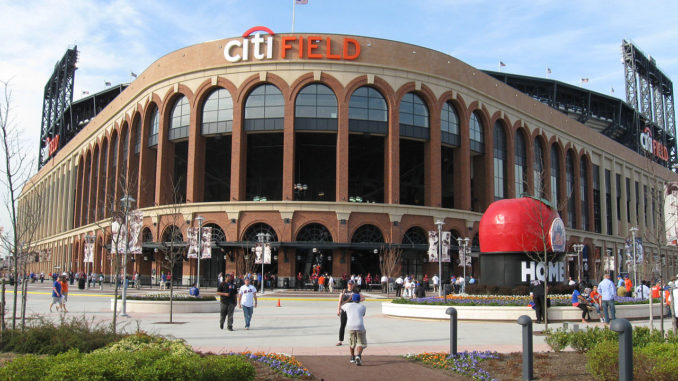
If you’re reading this article, you have probably heard that the 2020 MLB Draft will be reduced from the normal 50 rounds to just 5 rounds. While it remains to be seen how teams will adjust their strategies to fit this reduced slot money, I will attempt to get inside the mind of Brodie Van Wagenen, Tommy Tanous, and Marc Tramuta, the lead members of the Mets amateur scouting department. Last year, the first draft with these three, they decided to focus on signing three blue-chip high school prospects, sacrificing the depth in the following rounds. High school prospects are usually signed for more money, as they have more leverage with the ability to go to school. They were able to do this by signing players in rounds 4-10 to severely underslot bonuses. With there only being 5 rounds this year, this strategy will not be in play, at least not to the extent of the 2019 MLB Draft.
During the 2019 MLB Draft, between pick 19 (the pick the Mets hold in the 2020 MLB Draft) and pick 32, only one player was signed overslot (Yankees signed Anthony Volpe $2,740,300 with slot value $2,365,500). With the reduced number of rounds, of course the draft strategy of teams will be different. Between a consensus view of this draft class being deeper in talent and the lack of slot money, players will compete for less slot money. This will produce greater values and discounts among the players who most want to go into professional baseball. This is why I believe teams will go more underslot than usual. This leads me to believe that the Mets will select a player at #19 that will be underslot.
Looking at players in mock drafts going around the 15-25 range, I identified potential players who could be picks for the Mets at #19.
Prep Hitters:
Robert Hassell, OF, Independence HS TN. (Vanderbilt)
Pete Crow-Armstrong, OF, Harvard Westlake HS CA (Vanderbilt)
Tyler Soderstrom, C/UT, Turlock HS CA (UCLA)
With the previous two years the Mets taking prep hitters, we can expect the Mets to be heavily interested in continuing this trend. In this group of prep hitters, the strongest positional group is the outfielders. While we can assume top players like Zac Veen and Austin Hendrick will be taken, the volatility of the draft ahead of the Mets may leave these players available. Hassell is largely seen as the top hitter in the prep class and will likely be a corner outfield at the MLB level. However, with scouts mixed on his power potential, he may drop the the Mets #19 pick.
Crow-Armstrong is another player who in another less talented draft class shouldn’t be available with a #19 pick. Crow-Armstrong has been on the national scene for years and should combine good center field defense with a good bat. He shows good contact skills but his power is what leaves scouts undecided on his future worth. Crow-Armstrong looks like an interesting fit for the Mets, filling the void Jarred Kelenic was supposed to fill, as a good defensive center fielder with a good bat. Soderstrom is a prep catcher who scouts are undecided on his future defensive home. If he moves off catcher, he could end up in any of the corner spots. Scouts are less divided on his bat, which is where his real appeal comes from, as a hitter with good future hit and power. Soderstrom seems to be a questionable fit with the Mets, with many top young players / prospects already with defensive homes at the corners. Obviously, teams shouldn’t draft for need but it should be a consideration, as well as showing us what the Mets future plans are with players like J.D. Davis, Dominic Smith, Mark Vientos, and Brett Baty. If Soderstrom lands with the Mets, look for his bonus to be lower than Hassell and Crow-Armstrong. Ultimately, with the Mets having gone prep hitters in the previous two years, it wouldn’t surprise me to see the Mets continue this trend. If they do, I would predict they select Crow-Armstrong, as a way for Wan Wagenen to cover for his mistake of selecting Kelenic.
Prep Pitchers:
Jared Kelley, RHP, Refugio HS TX (Texas)
Nick Bitsko, RHP, Central Bucks East HS PA (Virginia)
Between the volatility associated with high school pitchers from their signability concerns and COVID-19 decreasing the already little scouting time to see these pitchers, this year seems riskier than ever in terms of taking a high school pitcher. The Mets have not let these issues hold them back as much as other teams, and could lead them again to capitalize and take one of the most talented arms in the class. Kelley is a big right hander with big stuff. Kelley is another supremely talented player who would only fall to the Mets due to signability concerns and the poor draft history involving high school pitchers. If Kelley goes to the Mets, look for them to give him a bonus similar to the one given to Matthew Allan last year (2.5 million). Bitsko, another big righty with big velocity, decided to graduate high school early, jumping from the 2021 class to the 2020 class. This makes it even tougher for teams to gamble on Bitsko, as they have more limited scouting tape on him. Given how talented these players are, and how few teams seem to be looking into this risky market of prep pitchers, I wouldn’t be shocked to see the Mets pull the trigger on one of these top prep pitchers.
College Hitters:
Patrick Bailey, C, North Carolina State
Casey Martin, SS/CF, Arkansas
Of the four groups, this is seen as the least likely for the Mets potential pick. However, with the increased likelihood of an underslot pick, the probability rises. The Mets haven’t taken a college hitter in the first round since 2014 (Michael Conforto). Bailey is seen as a high floor and high ceiling prospect, due to his highly regarded defense at the most important defensive position. Additionally, Bailey has shown good power potential which with the state of hitting with catchers could result in above average hitting at the catcher position. With the Mets without a clear catcher between Wilson Ramos and (hopefully) Francisco Alvarez, Bailey could be a target. Martin is a toolsy player with plus speed which could lead to him playing center field at the next level. Martin has a bit of a swing & miss issue but overall has the type of upside that could lead to him being a star at the next level. Seeing where Martin lands in the draft will be interesting to follow, as he is a player who some teams could easily fall in love with. Ultimately, I would be surprised to see the Mets take a college hitter with this pick, with the most likely scenario being they are able to cut a big bargain deal with a player rated lower.
College Pitchers:
Garrett Crochet, LHP, Tennessee
Cole Wilcox, RHP, Georgia
Slade Cecconi, RHP, Miami
CJ Van Eck, RHP, Florida State
While thus far in the Brodie Van Wagenen era, we have seen more high potential players, college pitchers are usually lower risk with a lower ceiling as well. With a historically strong college pitching crop, it wouldn’t be a shock to see the Mets instead go for the biggest bargain instead of the best player. Crochet is a player who seems to be falling down draft boards, but has some of the best velocity and stuff, especially considering him as a lefty. He has been flagged as a player with reliever risk but has a good fastball – slider combo should he be forced as a reliever. Wilcox is a big righty, standing at 6’5”, in the 230 range. He throws with good velocity but some scouts worry about his strike throwing ability. His status as a draft eligible sophomore gives him more leverage, thus decreasing his likelihood of being a bargain at this level. Cecconi is another big armed pitcher who has struggled with consistency thus far in his career. Cecconi also is a draft eligible sophomore which could interfere with his likelihood as a bargain in the draft. Van Eck was a highly regarded prospect coming out of high school, ultimately being drafted by the Mets in the 19th round in 2017. Van Eck does not possess the same velocity or stuff as the previously mentioned pitchers but seems like a good bet to become a mid to back end starter. Ultimately, I think with the combination of top tier talent and desire to save money for later rounds, it is most likely the Mets take a college pitcher with their selection at #19.
Christian Kainer covers the New York Mets minor league system for Prospects1500. Christian is a native Mets fan living in New Jersey, and going to school the University of Notre Dame in South Bend, Indiana. Christian was introduced to sports by his brother and dad, but fell in love with baseball as he learned how much math is involved in every play. Follow him on twitter at @CJ_Kainer.





Leave a Reply